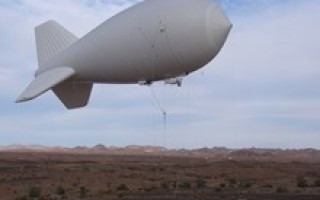Army's Aerostat enabling airborne surveillance for U.S. borders
NewsOctober 22, 2014

WASHINGTON. Lockheed Martin officials and the Army have extended the mission of the company's Persistent Threat Detection System (PTDS) aerostat system to be evaluated by the Department of Homeland Security (DHS) Customs and Border Protection (CBP) for operation along the Southern border of the United States.
The U.S. Army uses PTDS to help troops identify threats, track insurgents, and enhance overall readiness for warfighters overseas. With the troop drawdown, more of the systems are becoming available for other uses.
PTDS can deliver panoramic day/night surveillance in extremely challenging weather and can remain continuously aloft at high altitudes. It differs from other persistent ground surveillance aerostats used before by CBP in that it can fly at greater altitudes for longer periods of time, thereby providing 24/7 coverage to a larger area. The system can also be equipped with multiple sensors, which may be easily and quickly interchanged in order to support different types of CBP missions.
The Army's Program Executive Office for Intelligence, Electronic Warfare and Sensors, Product Director Aerostats, based at Aberdeen Proving Ground, Md., manages the PTDS program.






